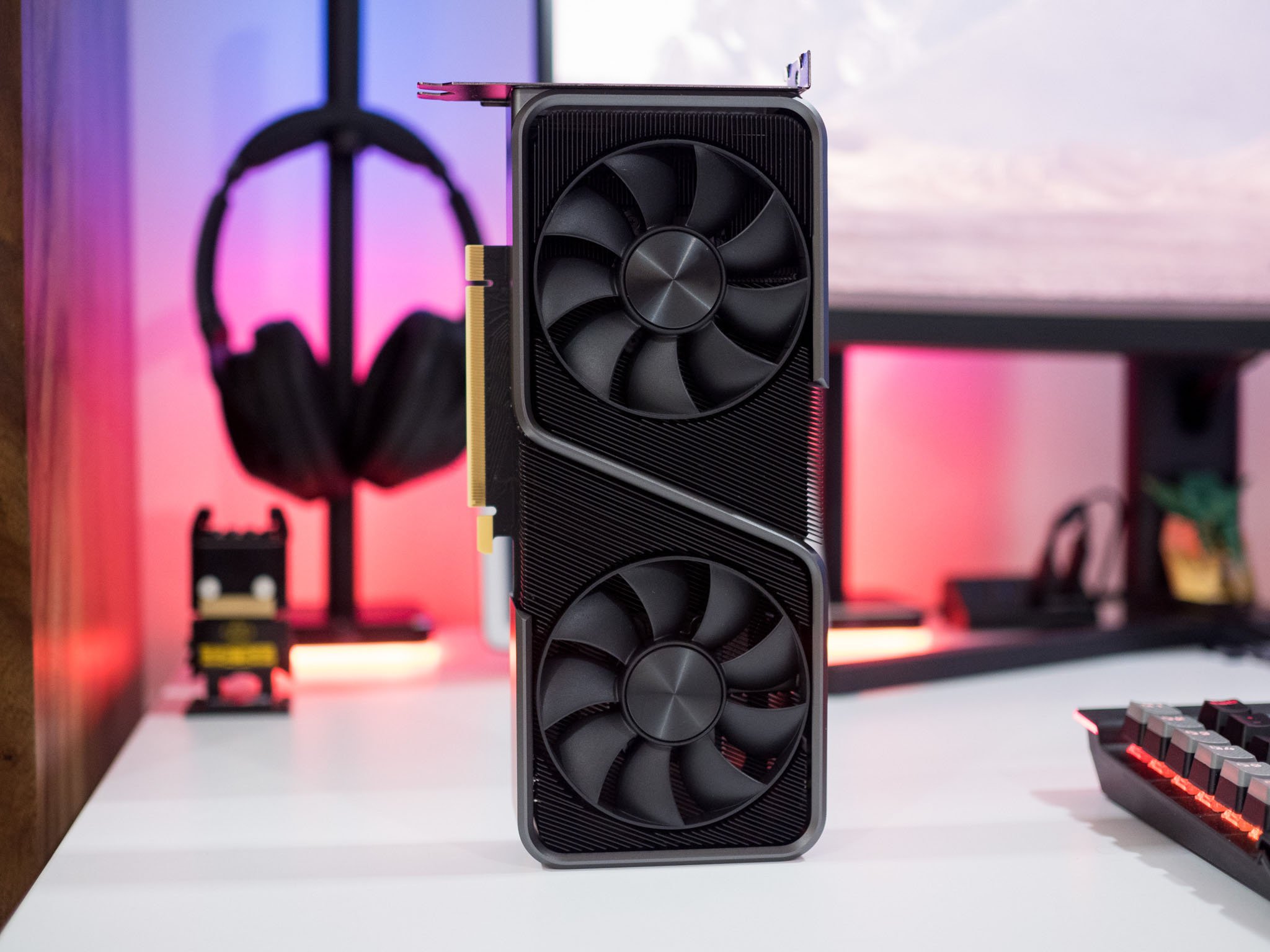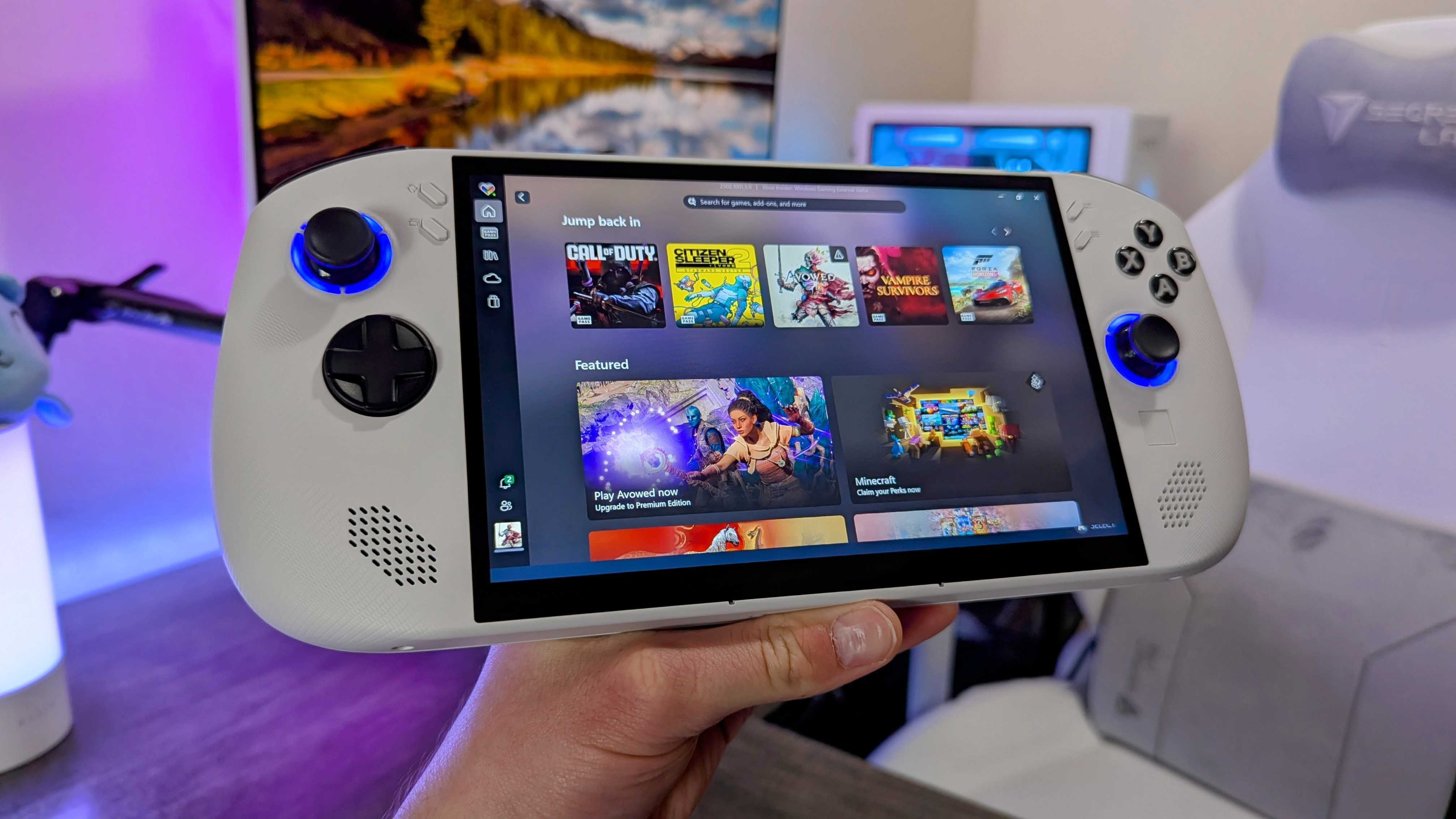With the RTX 30 series, NVIDIA is offering huge gains in performance from the Turing-based RTX 20 cards, making them some of the best graphics cards around. The RTX 3080 sets a new standard for 4K gaming, and at $699 the GPU is an excellent value.
But if you're looking for a more affordable option, the $499 RTX 3070 may just be the ideal GPU for you. What's particularly interesting about this card is that NVIDIA is touting performance on par with the RTX 2080 Ti, which debuted just two years ago for $999 — double the asking price of the RTX 3070.
The RTX 3070 has the potential to be the best GPU in the RTX 30 lineup for its price-to-performance figures. After all, the RTX 2070 series sold incredibly well over the last two years, and the hardware gains with the RTX 3070 make it the ideal upgrade for gamers looking to pick up a new GPU in 2020.
The RTX 3070 isn't just positioned as a card for 1400p gaming; the performance on offer makes it a great option for 4K gaming at high settings as well. Let's find out if the RTX 3070 delivers on these promises, and whether it is the upgrade you've been waiting for.
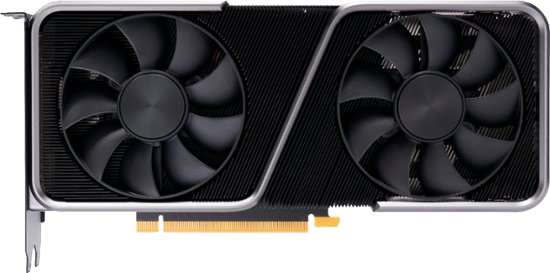
Bottom line: The GeForce RTX 3070 Founders Edition delivers truly outstanding performance, with the card outmatching the RTX 2080 Ti for less than half the price. The RTX 3070 is ideal for both 1440p and 4K gaming, and the value you're getting here is unbeatable. Availability continues to be a big hurdle, but aside from that, the RTX 3070 is the obvious upgrade for most gamers.
For
- Outstanding performance — on par with RTX 2080 Ti
- Insane value
- Ideal for 1440p gaming
- Runs 4K games at high settings
- HDMI 2.1, AV1 decode, PCIe 4.0
- Runs quiet
Against
- Availability issues
- 8GB of video memory
NVIDIA GeForce RTX 3070 Specs
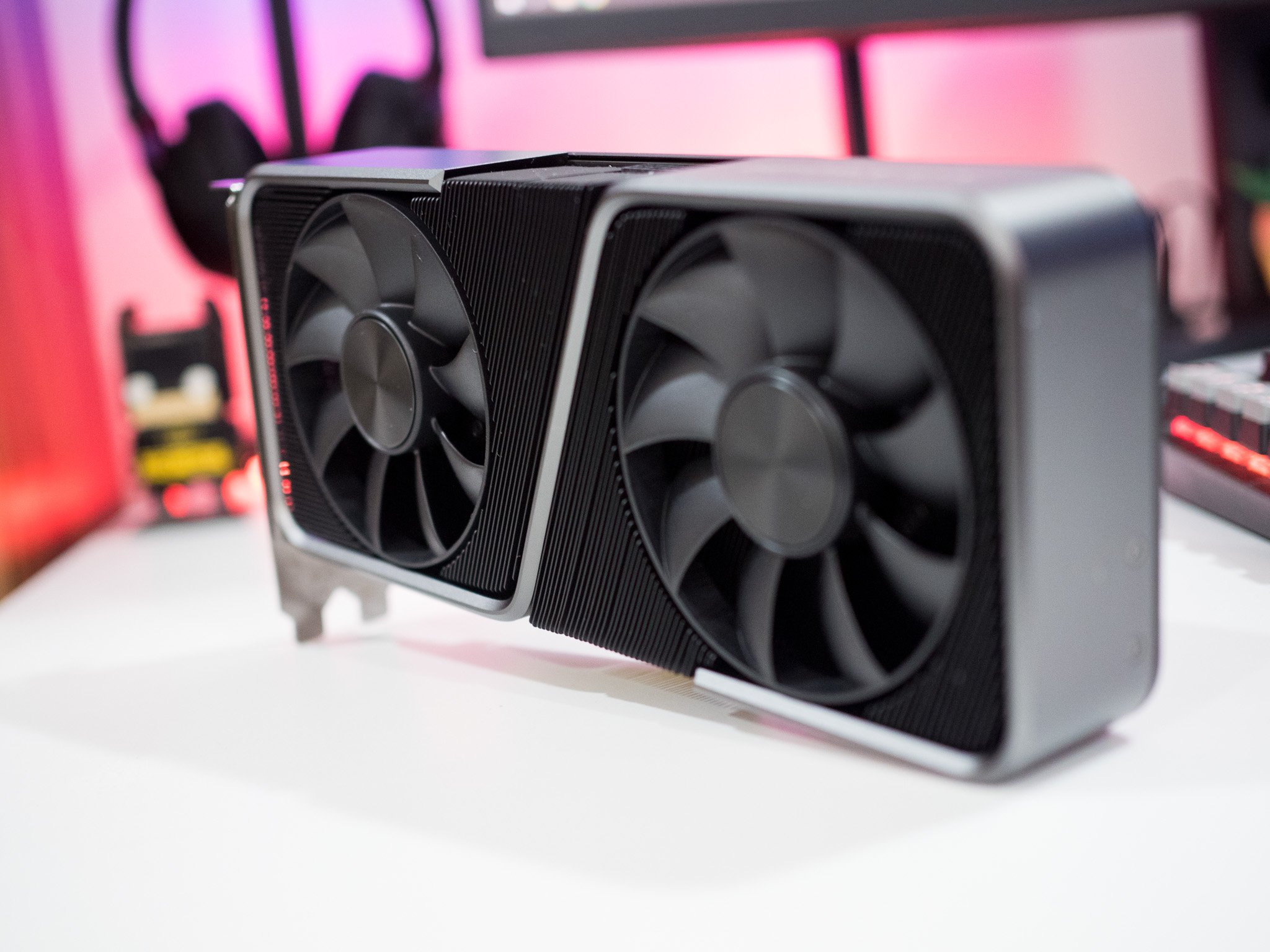
The RTX 3090 and 3080 are based on the GA102 silicon, but the RTX 3070 features a GA104 chipset that offers 17.4 billion transistors, nearly double that of the RTX 2070. Like its costlier siblings, the RTX 3070 is fabricated on a Samsung 8nm node, leading to significant gains in energy efficiency.
The RTX 3070 has HDMI 2.1 and PCIe 4.0 connectivity, and is built on an 8nm node.
As for the hardware on offer, the RTX 3070 Founders Edition features 5,888 CUDA cores along with 46 RT cores and 184 texture units, with a base clock of 1.5GHz and a boost of 1.7GHz. The RTX 3070 offers the same GDDR6 memory as its predecessor, while the RTX 3080 and 3090 feature the newer GDDR6X standard that NVIDIA co-created with Micron.
GDDR6X offers higher frequencies, allowing the RTX 3080 and 3090 to deliver much more bandwidth than RTX 20 series cards. With the RTX 3070 relying on GDDR6, it misses out on these gains. The card has 8GB of 14Gbps GDDR6 memory over a 256-bit interface, translating to an effective bandwidth of 448GB/s. For context, the GDDR6X memory on the RTX 3080 goes up to 19Gbps, leading to a bandwidth of 760GB/s.
It is understandable for NVIDIA to retain the GDDR6 standard for the RTX 3070 in lieu of GDDR6X or HBM2 memory, and while the effective bandwidth is on par with the previous generation, the RTX 3070 delivers huge upgrades in other areas.
| Category | NVIDIA GeForce RTX 3070 |
|---|---|
| Shader Cores | 5888 |
| Core Clock | 1500MHz |
| Boost Clock | 1725MHz |
| GPU | GA104 |
| Memory | 8GB GDDR6X256-bit bus width |
| Memory Clock | 14Gbps |
| Memory Bandwidth | 448GB/s |
| RT Cores | 46 |
| Tensor Cores | 184 |
| Transistors | 17.4 billion |
| Node | Samsung 8nm |
| Architecture | Ampere |
| TDP | 220W |
| Ports | 1 x HDMI 2.13 x DisplayPort 1.4a |
| Power Connector | 1 x 12-pin1 x PCIe 8-pin converter included |
The RTX 3070 offers the same HDMI 2.1 connectivity as the 3080 and 3090, and the card relies on PCIe 4.0 as well. You get three DisplayPort 1.4a ports, hardware-level decode for the new AV1 codec, and the new 12-pin power connector. The RTX 3070 has a TDP of 220W, or 45W more than the RTX 2070, and as a result NVIDIA is turning to the 12-pin power connector as standard.
NVIDIA GeForce RTX 3070 Ampere architecture
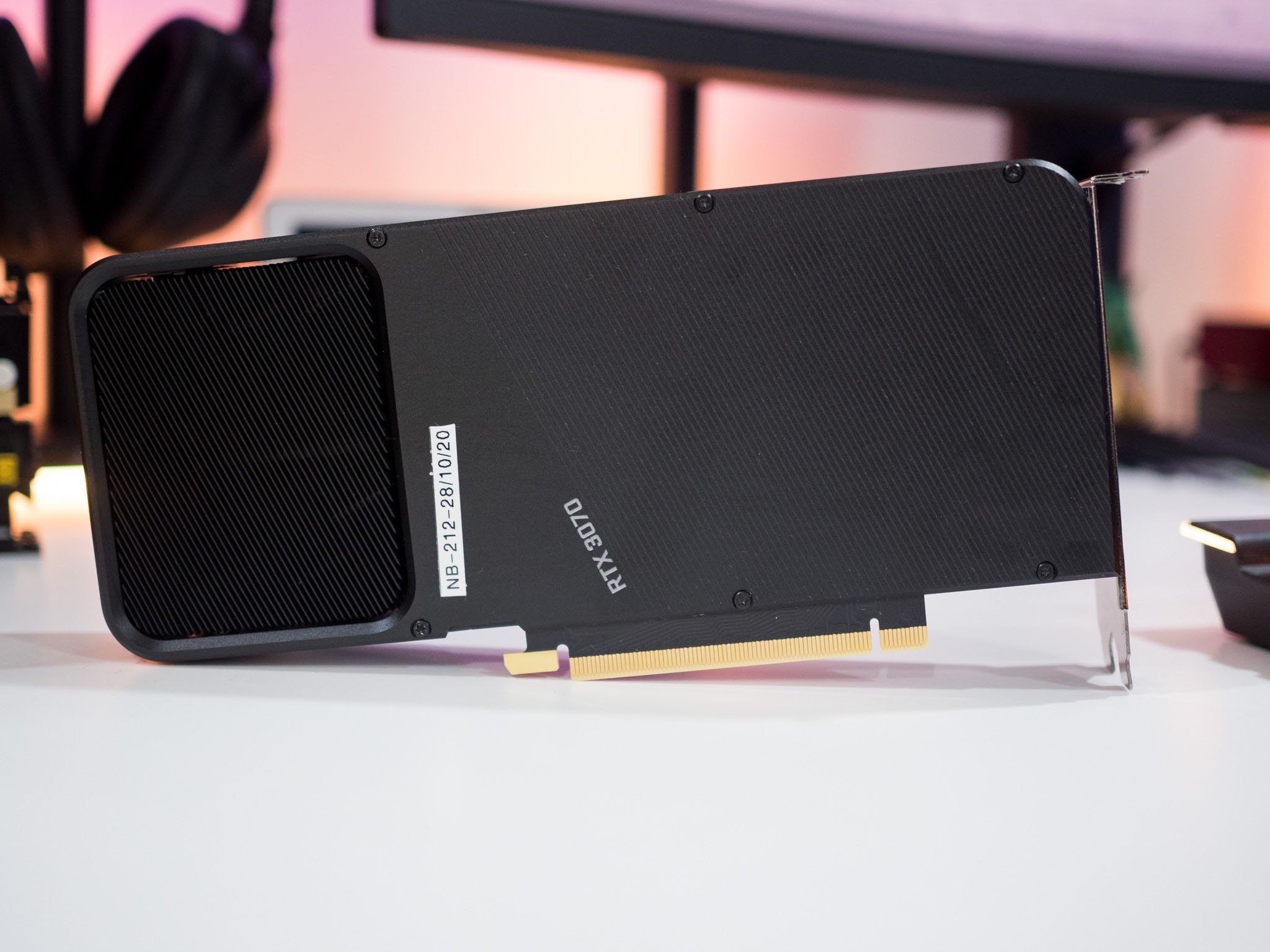
Thanks to the Ampere architecture, NVIDIA is touting significant gains over Turing-based RTX 20 cards. NVIDIA made a lot of changes to achieve these gains, including overhauling the streaming multiprocessor (SM) and updating the RT cores and tweaking the Tensor cores.
The Ampere streaming multiprocessor is the key behind the performance gains with RTX 3070.
But the biggest difference is down to the streaming multiprocessor. The GA104 silicon that powers the RTX 3070 has 46 streaming multiprocessors, which hold 128 CUDA cores each — that's how we get to the 5,888 cumulative CUDA cores for the card.
NVIDIA introduced a lot of changes to the Ampere SM to eke out the gains. Without going into too much detail, what you need to know is that rasterization — the technique that GPUs leverage to render two-dimensional objects on your screen — is based on two factors, floating point (FP32) and integer (INT32) operations.
NVIDIA GPUs traditionally focused on either floating point or integer tasks, but with Turing, NVIDIA enabled both tasks to be performed at the same time. The Turing SM had 64 CUDA cores for FP32 tasks and 64 INT32 cores for crunching integers, and this led to decent gains over Pascal.
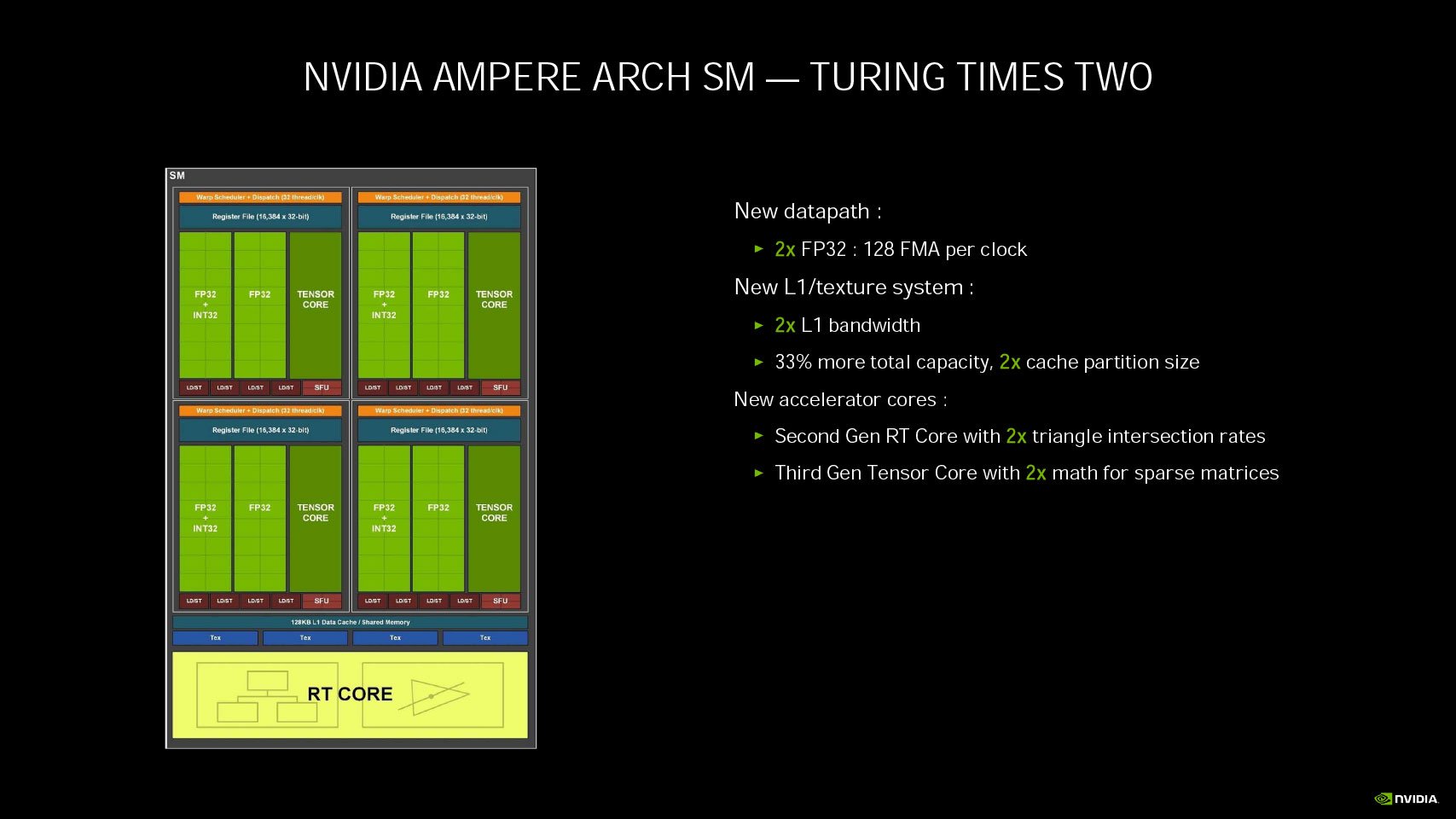
With Ampere, NVIDIA is changing how these cores work. An Ampere SM has 128 CUDA cores divided into two clusters: the first 64-core cluster is solely for FP32 tasks (similar to Turing), but the second 64-core cluster can be used for either FP32 or INT32 tasks. That means that if the second cluster finishes its integer tasks, it can switch over to FP32 operations. This is at the heart of what gives the RTX 3070 a sizeable advantage over the RTX 2070, 2080, and even the 2080 Ti.
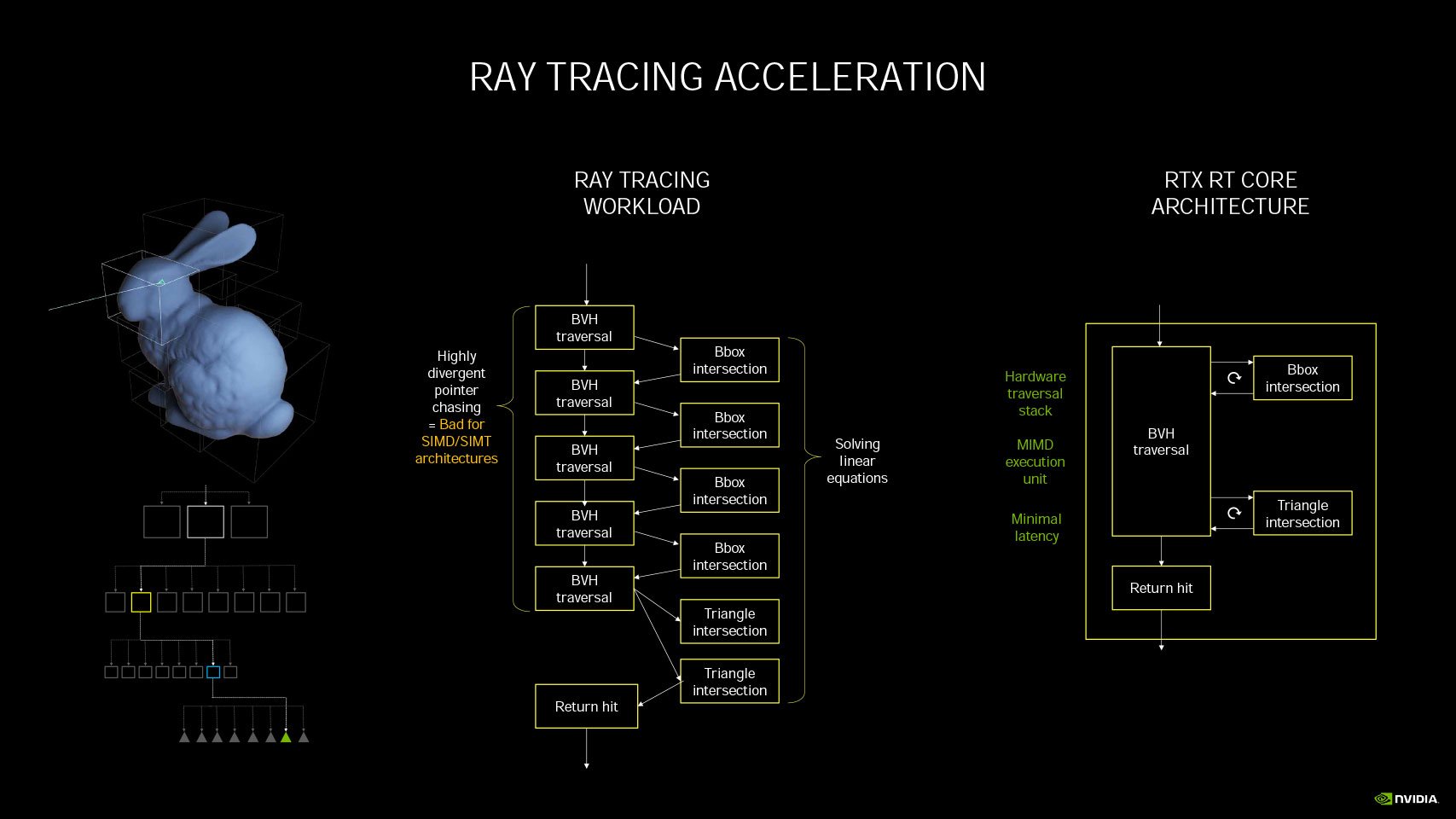
The RTX 3070 also includes sizeable gains in ray tracing, with NVIDIA making a few key changes here as well. The dedicated RT cores handle bounding volume hierarchy (BVH) and triangle intersection tests for real-time lighting and occlusion effects.
The second-gen cores are more efficient, and triangle intersection tests are now handled by a dedicated unit. These cores also include a new feature that allows for motion blur at a hardware level. With ray tracing now a mainstay on the Xbox Series X, Series S, and the PlayStation 5, NVIDIA is looking to cement its lead with the second-gen RT cores.
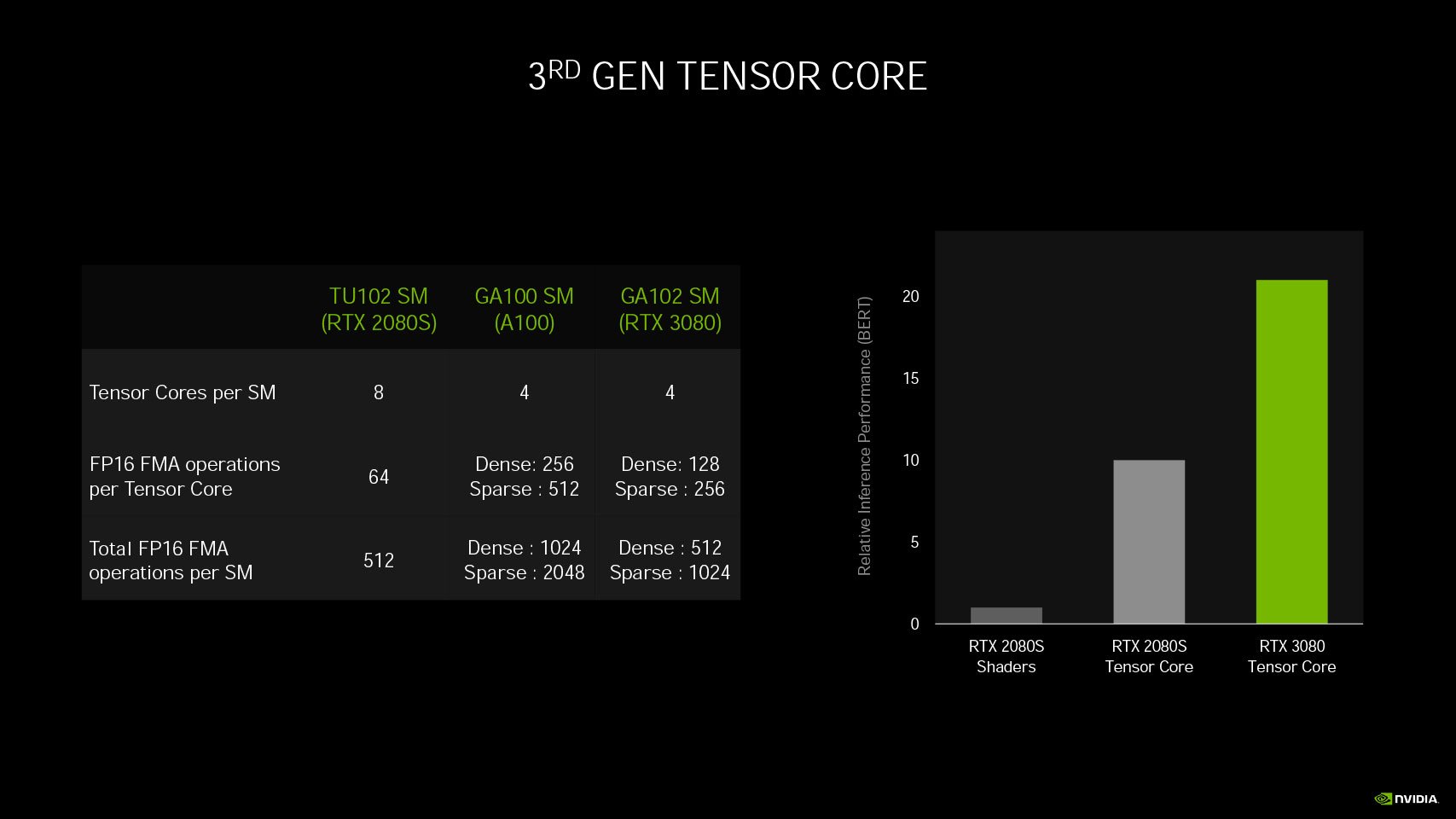
NVIDIA is similarly delivering exciting gains for the third-gen Tensor gains, and while there are less cores than the RTX 20 series, the efficiency of the cores has more than doubled.
NVIDIA GeForce RTX 3070 Design and features
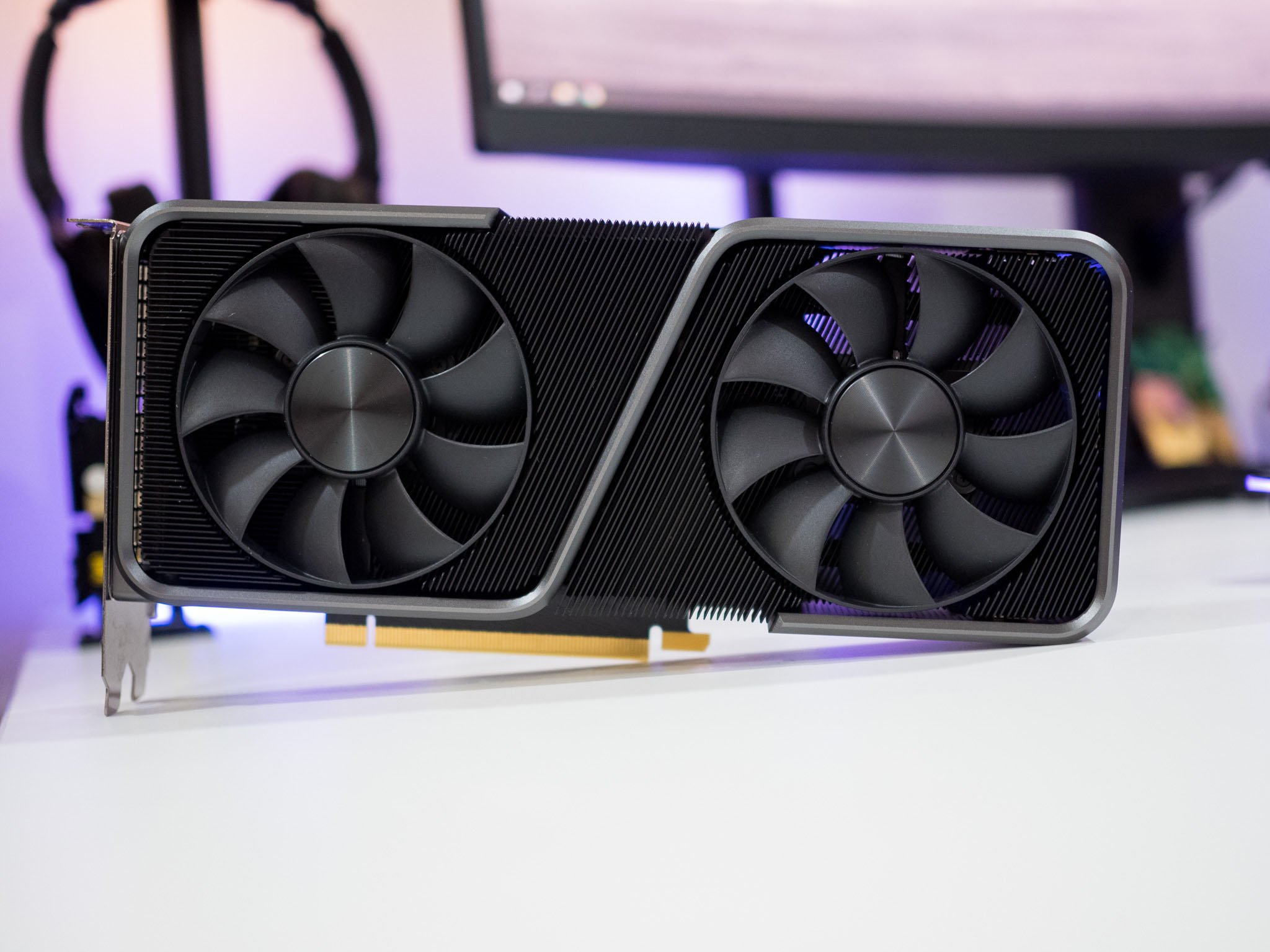
NVIDIA hasn't just limited the changes to the architecture; it has also overhauled the design of its Founders Edition cards. The RTX 3080 introduced an innovative push-pull cooling system, and while the RTX 3070 has a traditional layout, it still manages to stand out.
If you care about aesthetics, the RTX 3070 Founders Edition is the card to get.
The RTX 3070 is a dual-slot card, with the dual fans sucking in air from the bottom of the case. The card is much more compact than the RTX 3080, but it retains the same design language: the color scheme is predominantly black, with a matte grey finish for the outer layer.
The metal backplate takes up most of the back of the card, but there is a cutout on the right for the cooling system, allowing the secondary fan to vent air through the fins. You'll find the GeForce RTX logo on the right, and unlike the RTX 3080, the logo does not illuminate.
NVIDIA says the new design is optimized to deliver better cooling, and that is indeed the case in real-world use. The fans on the RTX 3070 don't kick in when the GPU is under minimal load, and even when they're running they are quieter than the RTX 20 series fans.
A big change with all the RTX 30 series cards is the 12-pin power connector, and NVIDIA includes an adapter to connect an existing 8-pin connector to the new system. Unlike the 320W requirement of the RTX 3080, the RTX 3070 needs up to 220W, so the adapter hooks up to a single 8-pin power cable. While the RTX 3070 introduces a lot of exciting features, it is missing a few ports: NVIDIA got rid of the USB-C port, and the NVLink connector for SLI is limited to the RTX 3090.
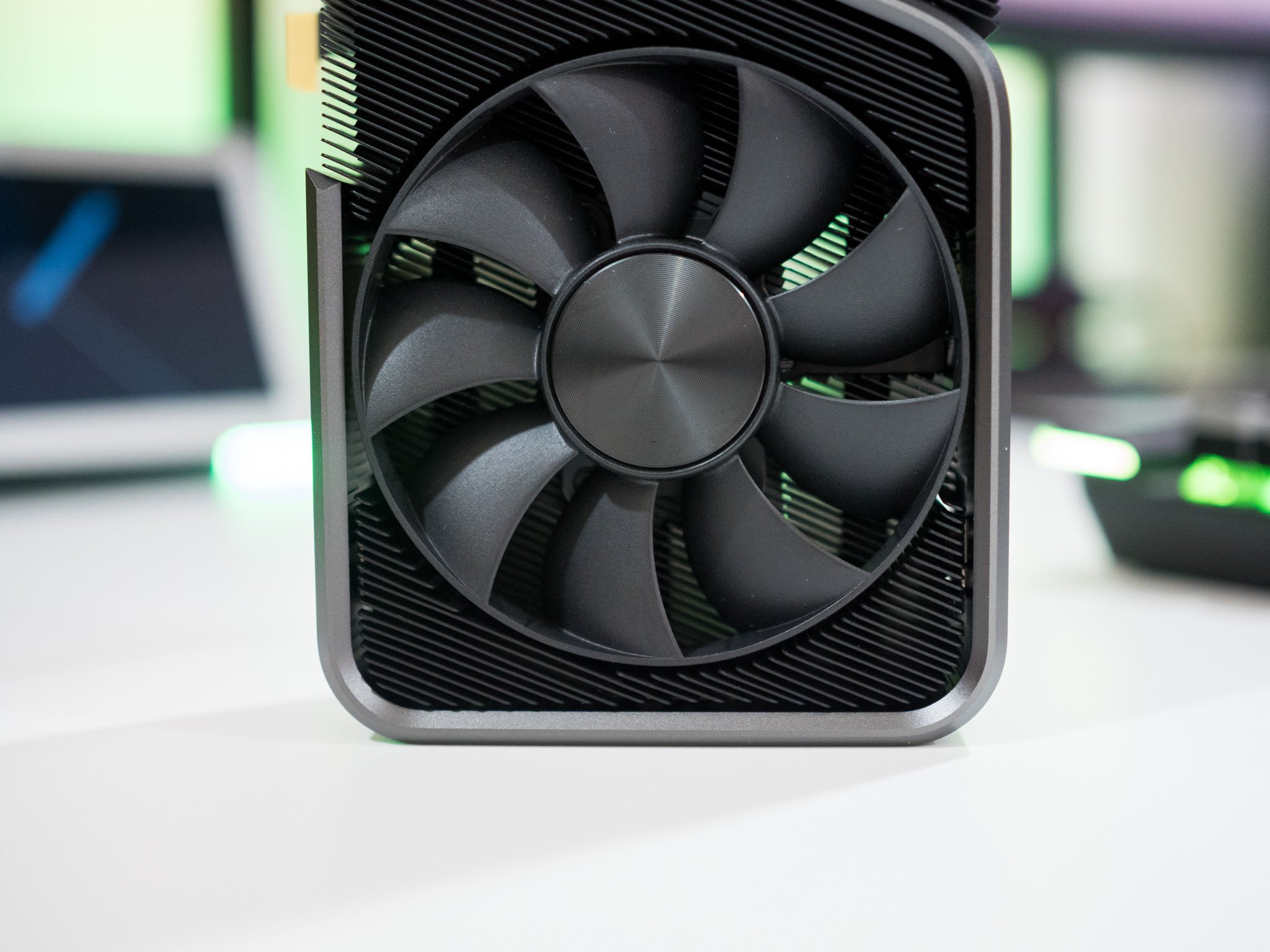
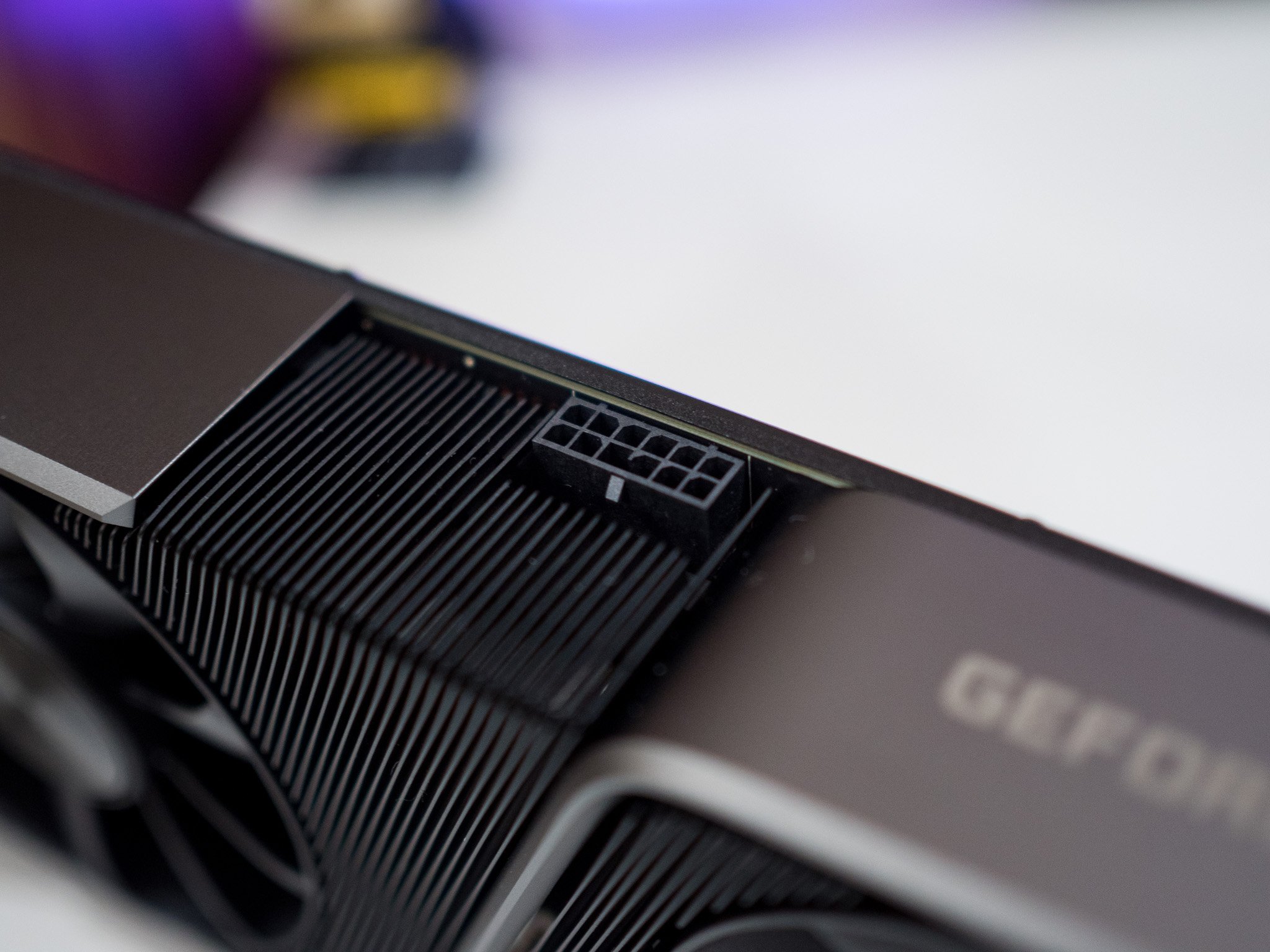
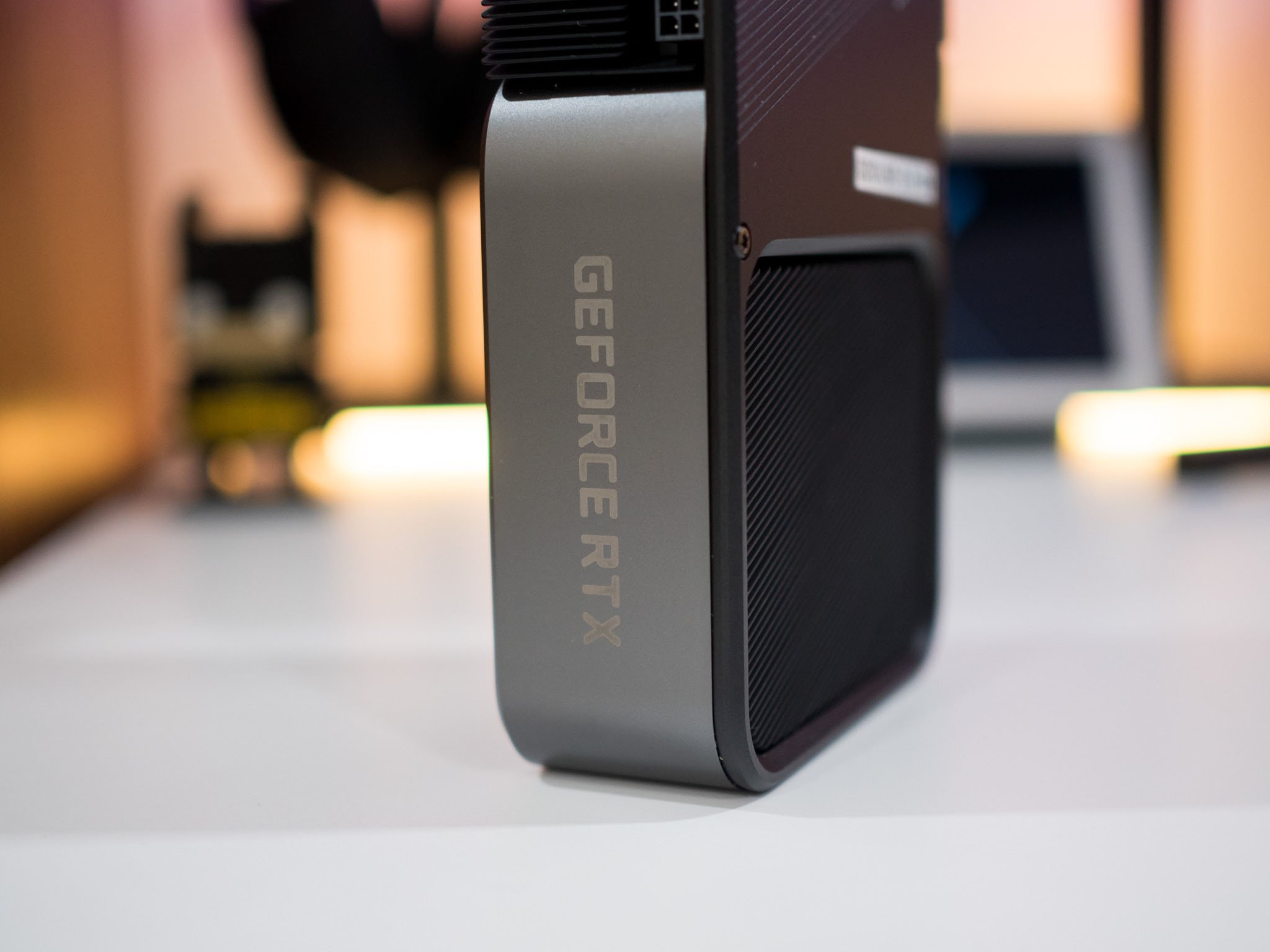
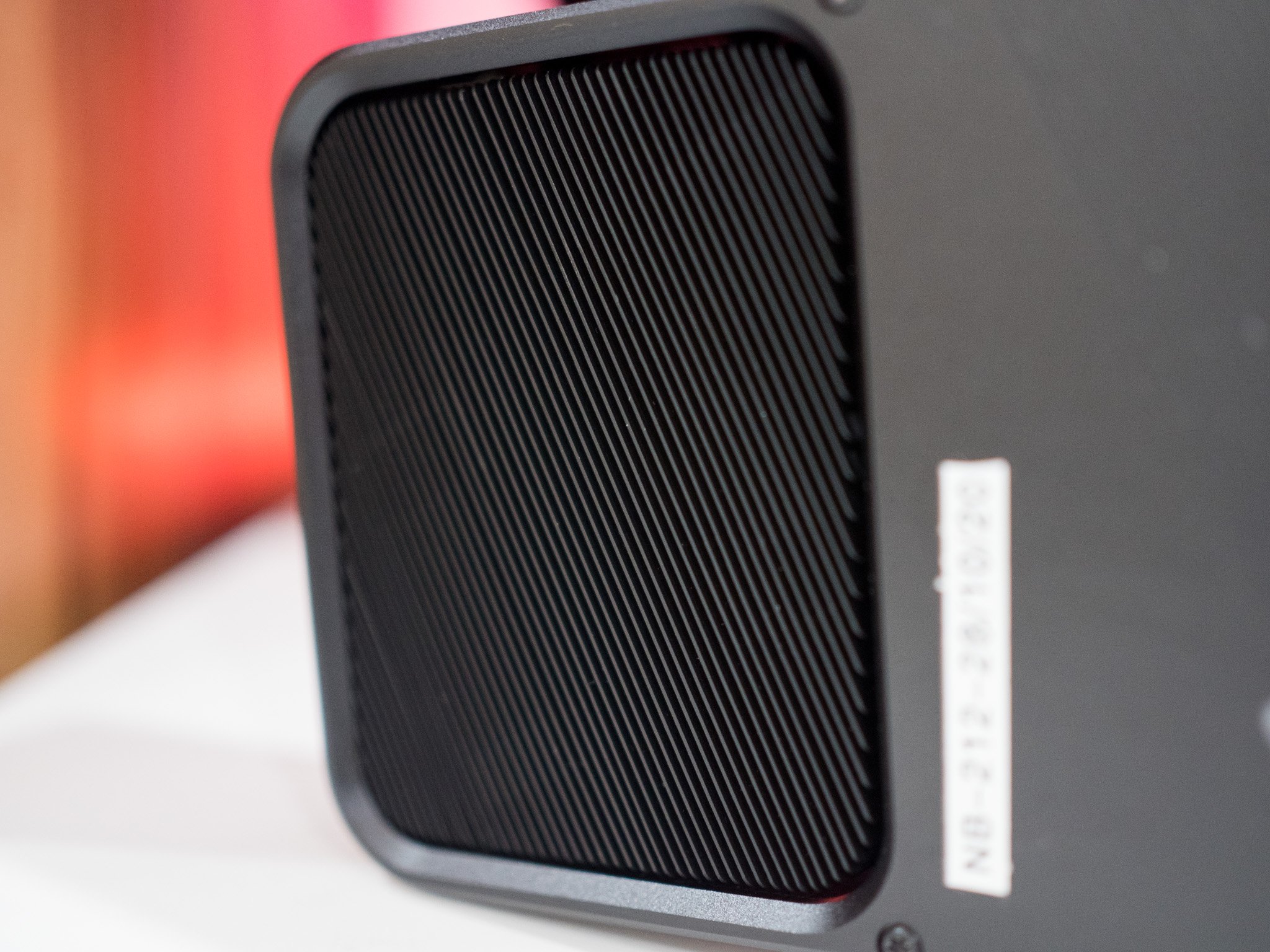
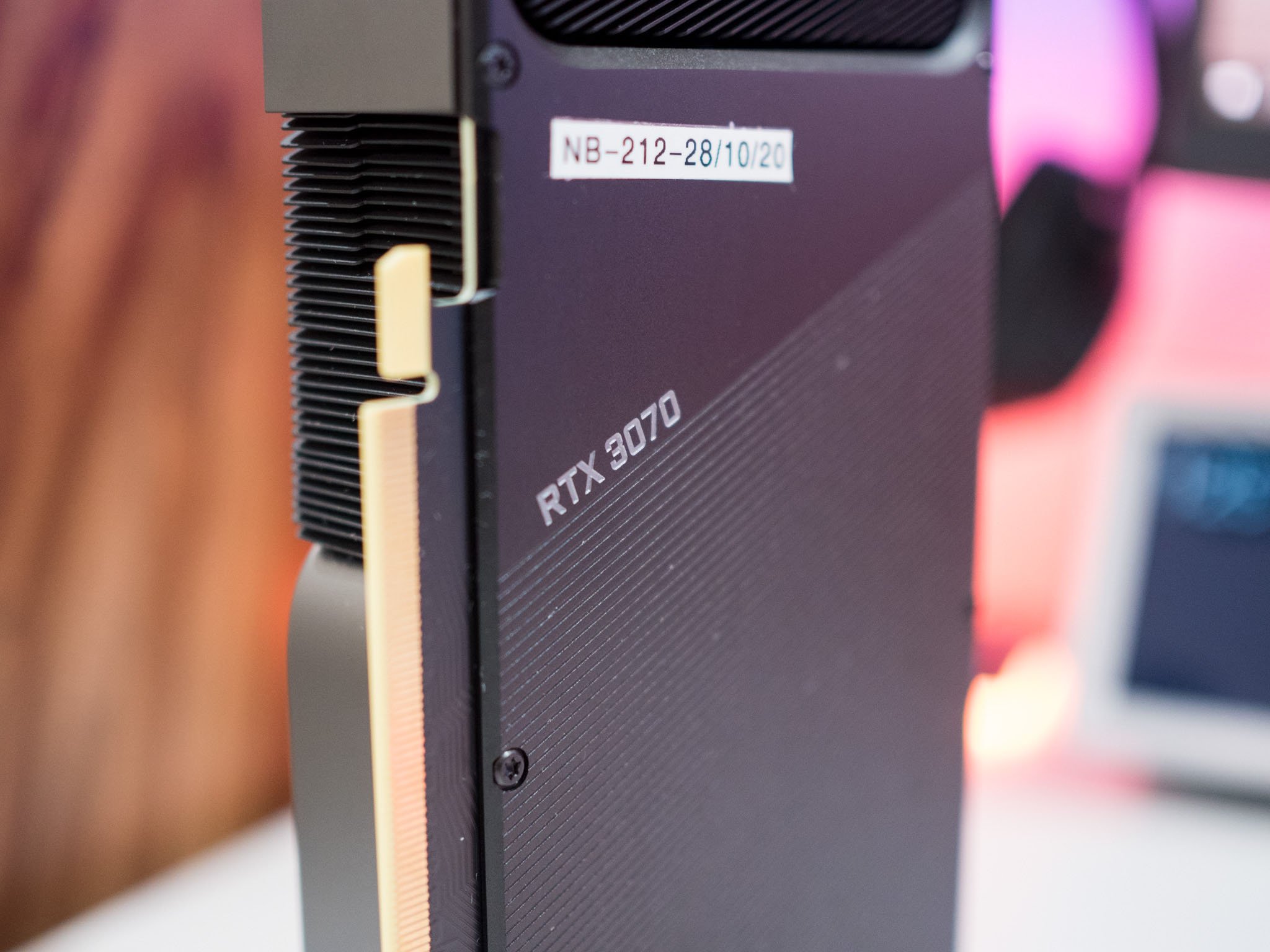
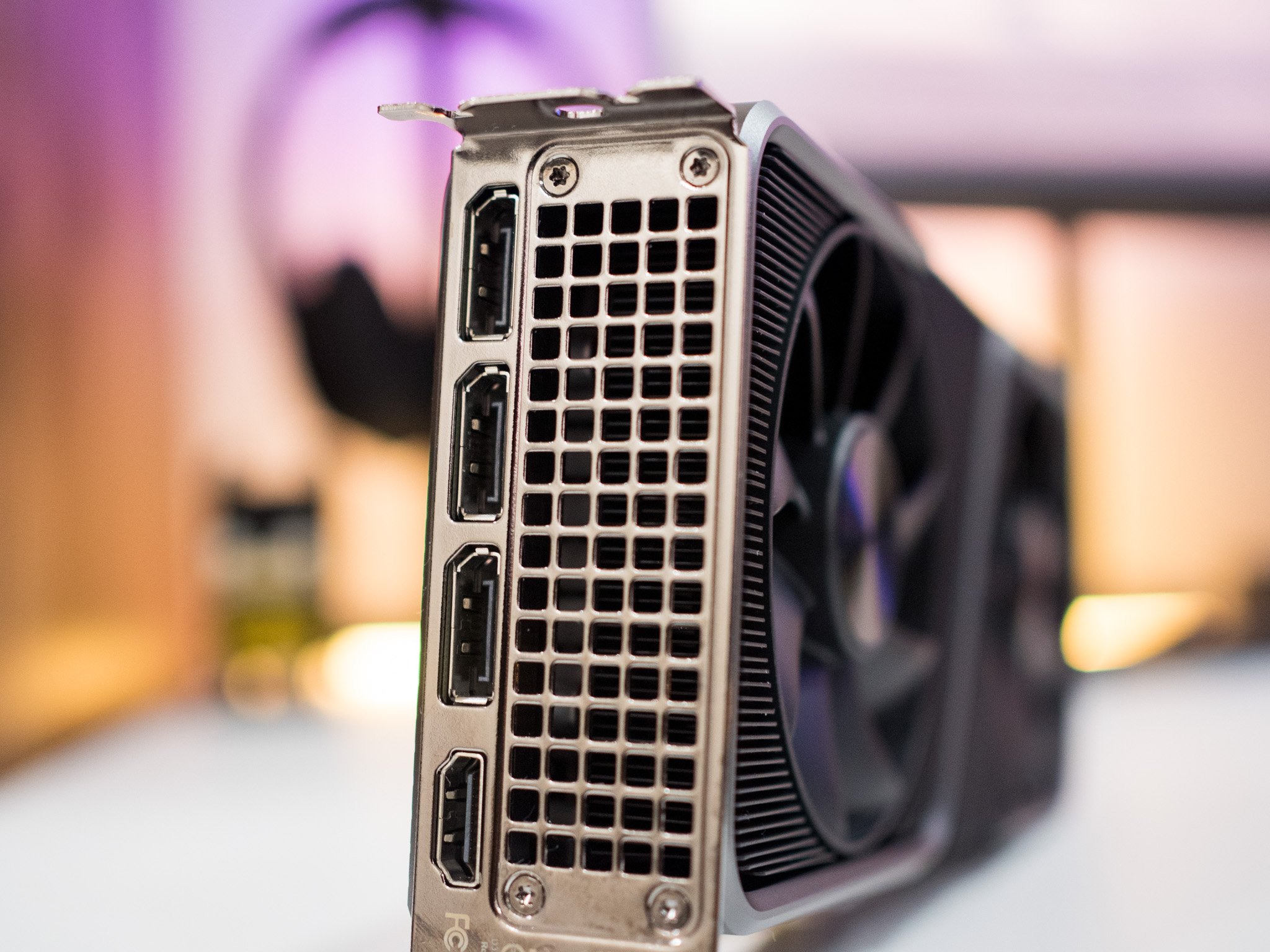
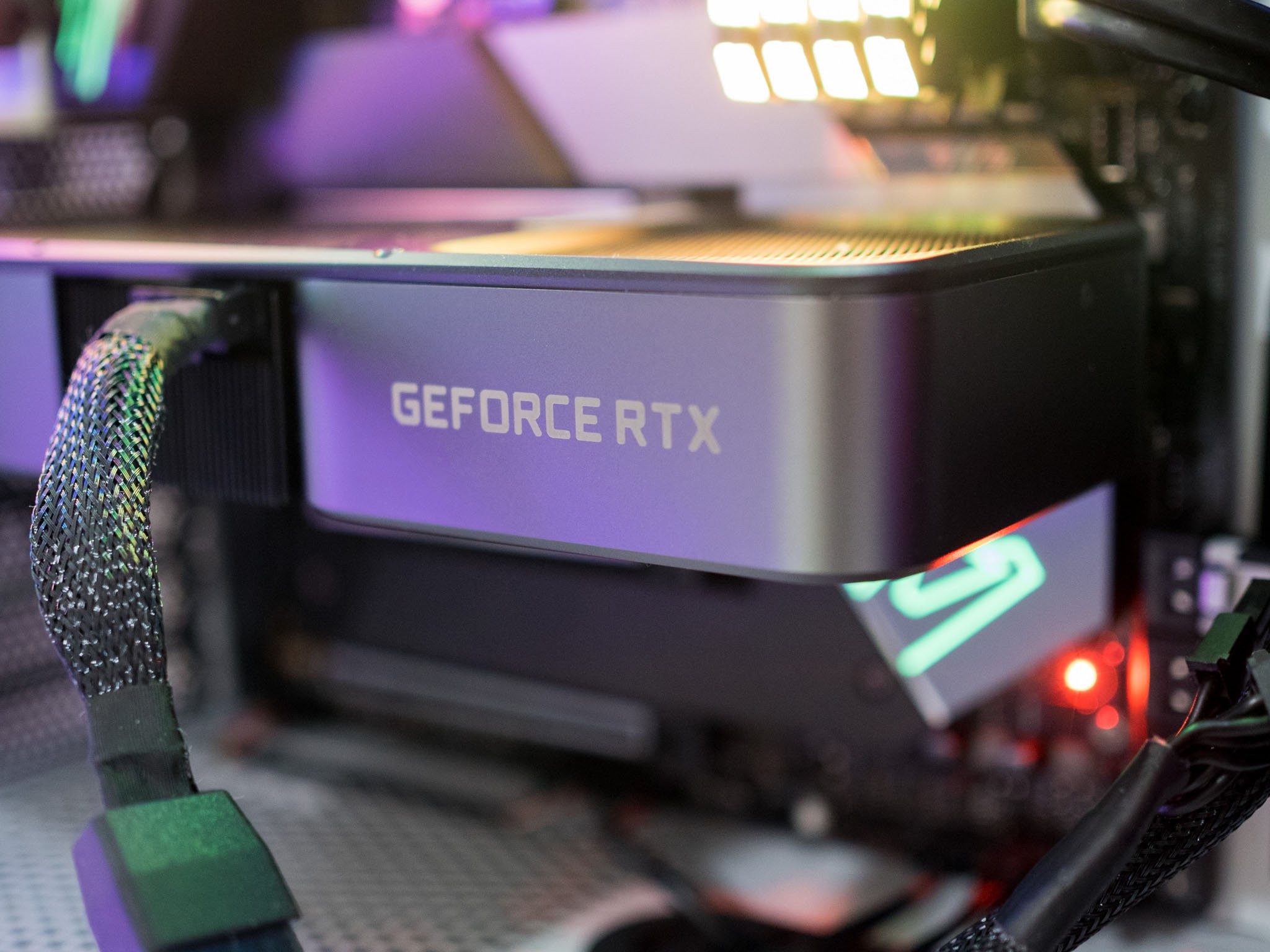
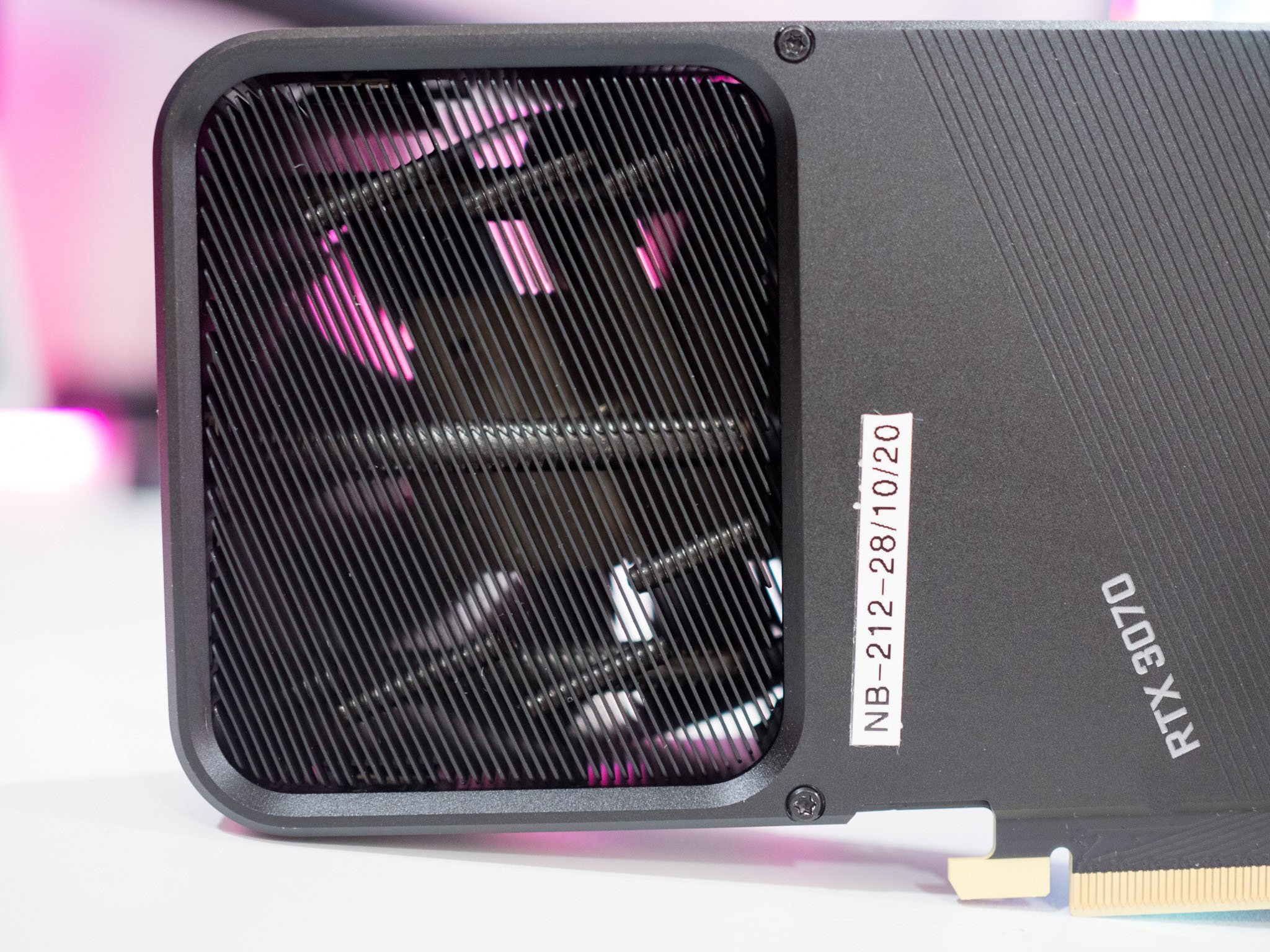
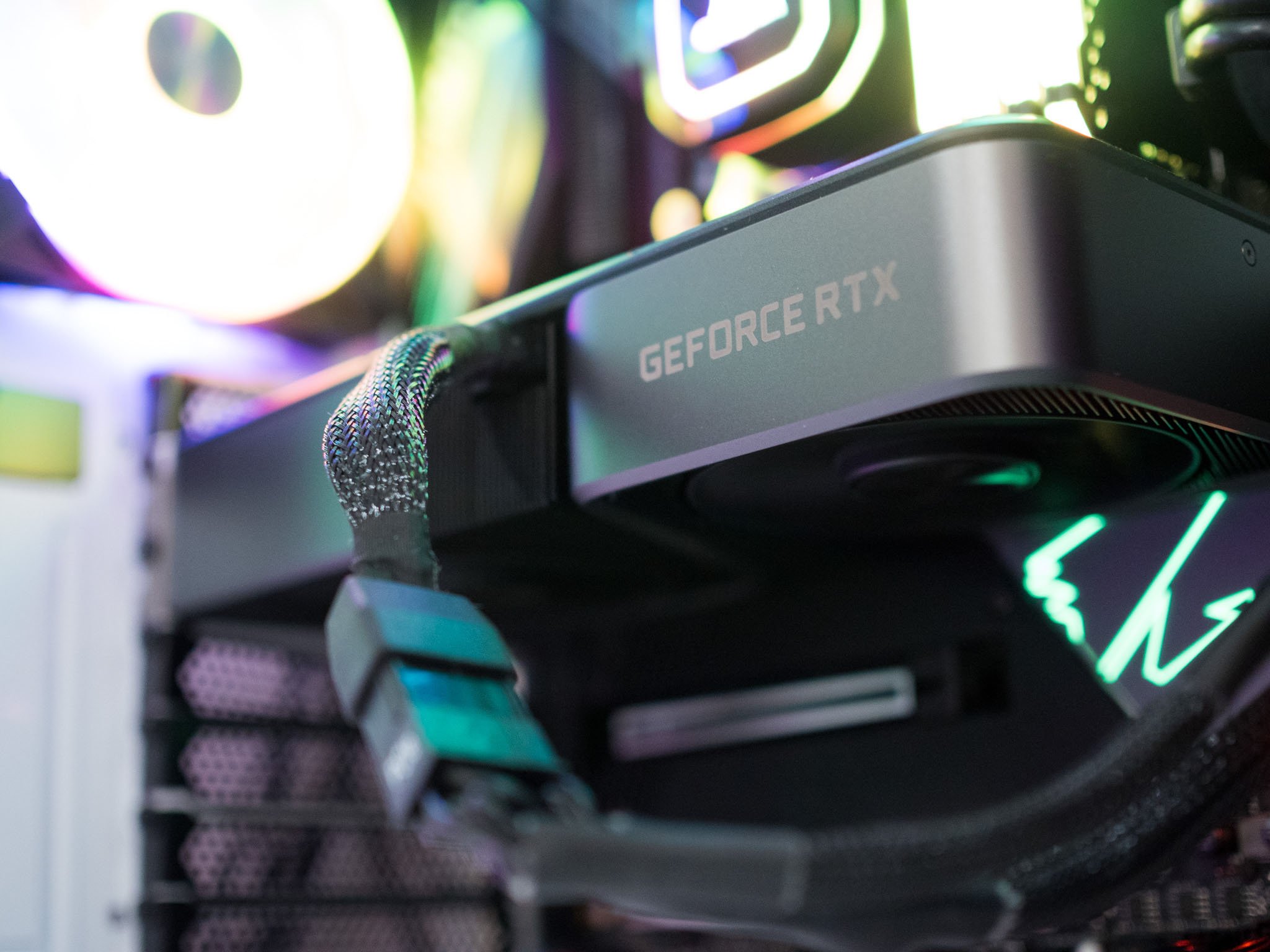
The RTX 3070 isn't short on innovative tech. NVIDIA's Reflex is a new feature that's debuting on RTX 30 cards, and it is designed to deliver much better latency, particularly in FPS titles. NVIDIA was able to make several optimizations to the render queue to reduce system latency, and the Reflex tech works in conjunction with G-Sync to deliver refresh rates in excess of 360Hz and more.
Another exciting addition is RTX IO, which sees NVIDIA leveraging Microsoft's DirectStorage API to reduce load times. It does so by offloading CPU tasks to the GPU, and with the new consoles touting significantly less load times for next-gen games, you can look forward to the same gains with the RTX 30 series.
Then there's NVIDIA Broadcast, my favorite new feature. Broadcast is the evolution of RTX Voice, and it offers background noise suppression for video calls. The feature works incredibly well, and it does a great job tuning out any background noise. I use a keyboard with MX Brown switches, and Broadcast essentially tunes out the keyboard noise when I'm talking in a video call. It is one of those features that you have to use to truly understand how great it is, and with Broadcast NVIDIA is also adding video-based effects.
NVIDIA GeForce RTX 3070 Performance
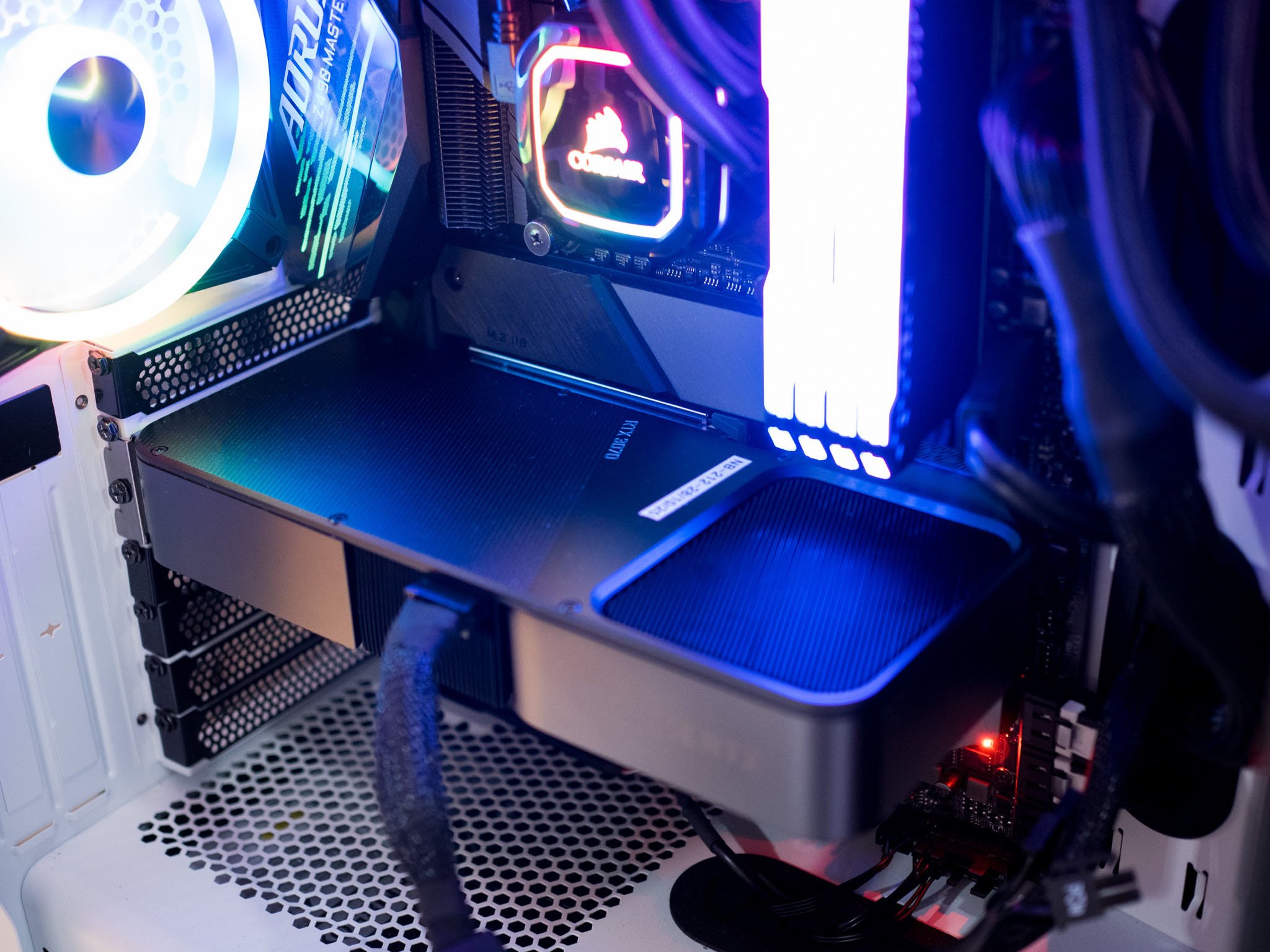
The RTX 3070 forms the ideal middle ground in NVIDIA's launch series, and the card is the one that most gamers currently using the GTX 10 series or older will turn to when considering an upgrade.
| Category | Hardware |
|---|---|
| CPU | Intel Core i9-10900K |
| GPU | NVIDIA GeForce RTX 3070 |
| Cooling | Corsair iCUE H115i RGB Pro XT |
| Motherboard | Gigabyte Aorus Z490 Master |
| Memory | 32GB Corsair Vengeance Pro |
| Storage | 1TB Samsung 970 Evo Plus |
| PSU | Corsair RM850x |
The RTX 3070 has three DisplayPort 1.4a ports that go up to 4K at 120Hz or 8K at 60Hz by leveraging Display Stream Compression (DSC) 1.2a. The big deal here is that the card also offers HDMI 2.1, bringing it on par with the likes of the Xbox Series X and PlayStation 5.
HDMI 2.1 facilitates 4K at up to 240Hz and 8K at 120Hz, and while there aren't many monitors that offer the standard yet, it should go mainstream soon enough.
The RTX 3070 is ideally suited for 1440p gaming, but that doesn't mean the card cannot handle 4K games. In my testing, I found that the card easily outmatched the RTX 2080 Founders Edition, and held its own against the 2080 Ti. NVIDIA isn't making idle claims here, and the RTX 3070 is every bit as outstanding as it is made out to be, and that's good news if you're in the market for a new card.
Another area where NVIDIA is touting significant gains is Deep Learning Super Sampling (DLSS). The tech essentially upscales games, but does so while retaining the visual quality. The end result is that you get much better frame rates while maintaining the same visual fidelity. Most AAA games now include DLSS, and the tech makes a drastic difference, particularly in the context of 4K gaming with the RTX 3070. So let's take a look at how the RTX 3070 holds up against the RTX 3080 at 1440p and 4K games.
NVIDIA GeForce RTX 3070: 1440p gaming
| Game | RTX 3080 (avg. fps) | RTX 3070 (avg. fps) | RTX 2080 (avg. fps) |
|---|---|---|---|
| Microsoft Flight Simulator | 48 | 47 | 42 |
| Control | 98 | 77 | 61 |
| Death Stranding | 164 | 135 | 102 |
| Far Cry New Dawn | 144 | 136 | 118 |
| Gears 5 | 125 | 102 | 78 |
| Metro Exodus | 174 | 136 | 105 |
| Red Dead Redemption 2 | 129 | 102 | 82 |
| Shadow of the Tomb Raider | 130 | 107 | 84 |
| Total War Saga: Troy | 105 | 82 | 67 |
The RTX 3070 delivers a massive performance uptick over the RTX 2080 at 1440p, with the card holding its own against the RTX 3080 in a few games. I played all titles with the settings at Ultra or Very High, and the RTX 3070 shows just big a difference there is from the RTX 2080.
The RTX 3070 is around 20 to 25% faster than the RTX 2080, and those figures put the card on an equal footing with the RTX 2080 Ti. The RTX 3080 delivers better performance as it has more shader codes, but for most users the RTX 3070 is more than adequate, particularly considering more than 90% of gamers still play on 1080p or 1440p.
With high refresh rate monitors becoming that much more affordable, the RTX 3070 is the ideal upgrade if you want to unlock higher frame rates when playing games at 1080p or 1440p.
NVIDIA GeForce RTX 3070: 4K gaming
| Game | RTX 3080 (avg. fps) | RTX 3070 (avg. fps) | RTX 2080 (avg. fps) |
|---|---|---|---|
| Microsoft Flight Simulator | 42 | 32 | 28 |
| Control | 52 | 39 | 28 |
| Death Stranding | 101 | 74 | 58 |
| Far Cry New Dawn | 102 | 81 | 65 |
| Gears 5 | 78 | 59 | 46 |
| Metro Exodus | 98 | 74 | 56 |
| Red Dead Redemption 2 | 82 | 63 | 48 |
| Shadow of the Tomb Raider | 75 | 58 | 44 |
| Total War Saga: Troy | 61 | 45 | 36 |
Barring the outlier that is Microsoft Flight Simulator, the RTX 3070 holds up particularly well for 4K gaming as well. The RTX 3080 is faster by an average of 20% here, but you can get nearly 60fps in most titles with the RTX 3070. With the settings turned down to High, the card hits 60fps in titles like Control.
What's noteworthy is just how big a lead the RTX 3070 carves out over the RTX 2080. There's a 25% difference on average between the two cards, and the card holds up to the 2080 Ti even at 4K. If you're coming from the GTX 1070 or the RTX 2070, you will easily see a performance uptick of 50 to 60% at 1440p and 4K with the RTX 3070.
That's what makes the RTX 3070 such an exciting option in 2020. The card delivers outstanding performance at both 1440p and 4K resolutions, and the affordability makes it an easier upgrade choice than the RTX 3080. The level of performance that you're getting here is truly incredible, and when you consider the fact that the RTX 3070 costs just $499, it is the bargain of the year.
NVIDIA GeForce RTX 3070 The competition
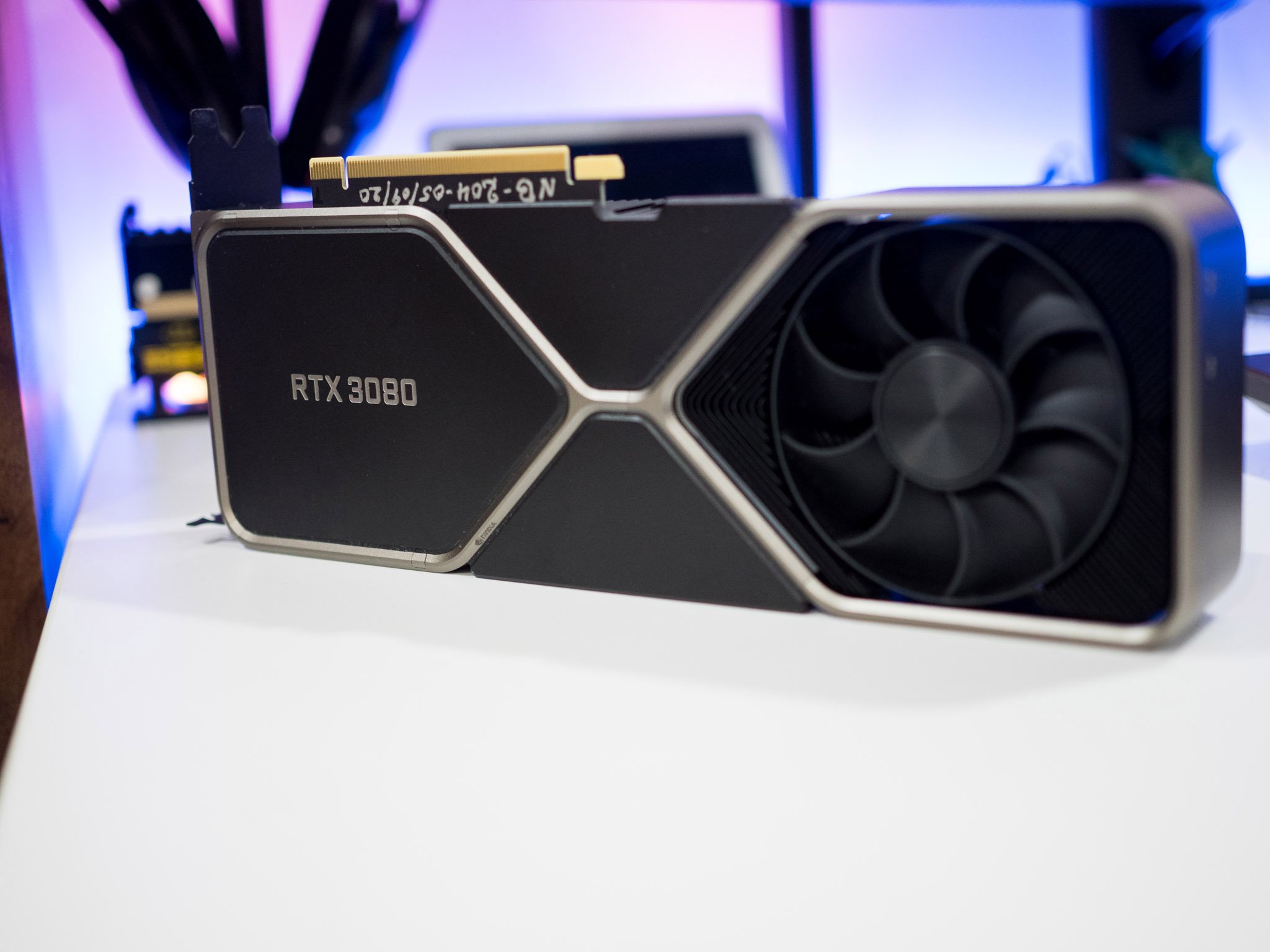
The RTX 30 series is in a league of its own right now, and the only cards that outmatch the RTX 3070 are the RTX 3080 and 3090. The RTX 3080 is the obvious alternative, offering better performance at 4K. The downside is that the RTX 3080 is power hungry, and at $699 it is $200 more than the 3070.
AMD's RDNA 2-based Radeon RX 6000 series. The RX 6800 in particular goes up against the RTX 3070, offering 60 compute units, 16GB of GDDR6 over a 256-bit width and 16Gbps clock for a total bandwidth of 512GB/s, and 250W power requirement.
The card also has HDMI 2.1, DisplayPort 1.4, AV1 decode, and is set to go on sale shortly for $579. While it is costlier than the RTX 3070, you are getting double the amount of video memory. NVIDIA's inventory woes could mean AMD can take a lead here if it has better inventory of the RX 6000 series at launch.
NVIDIA GeForce RTX 3070 Should you buy?
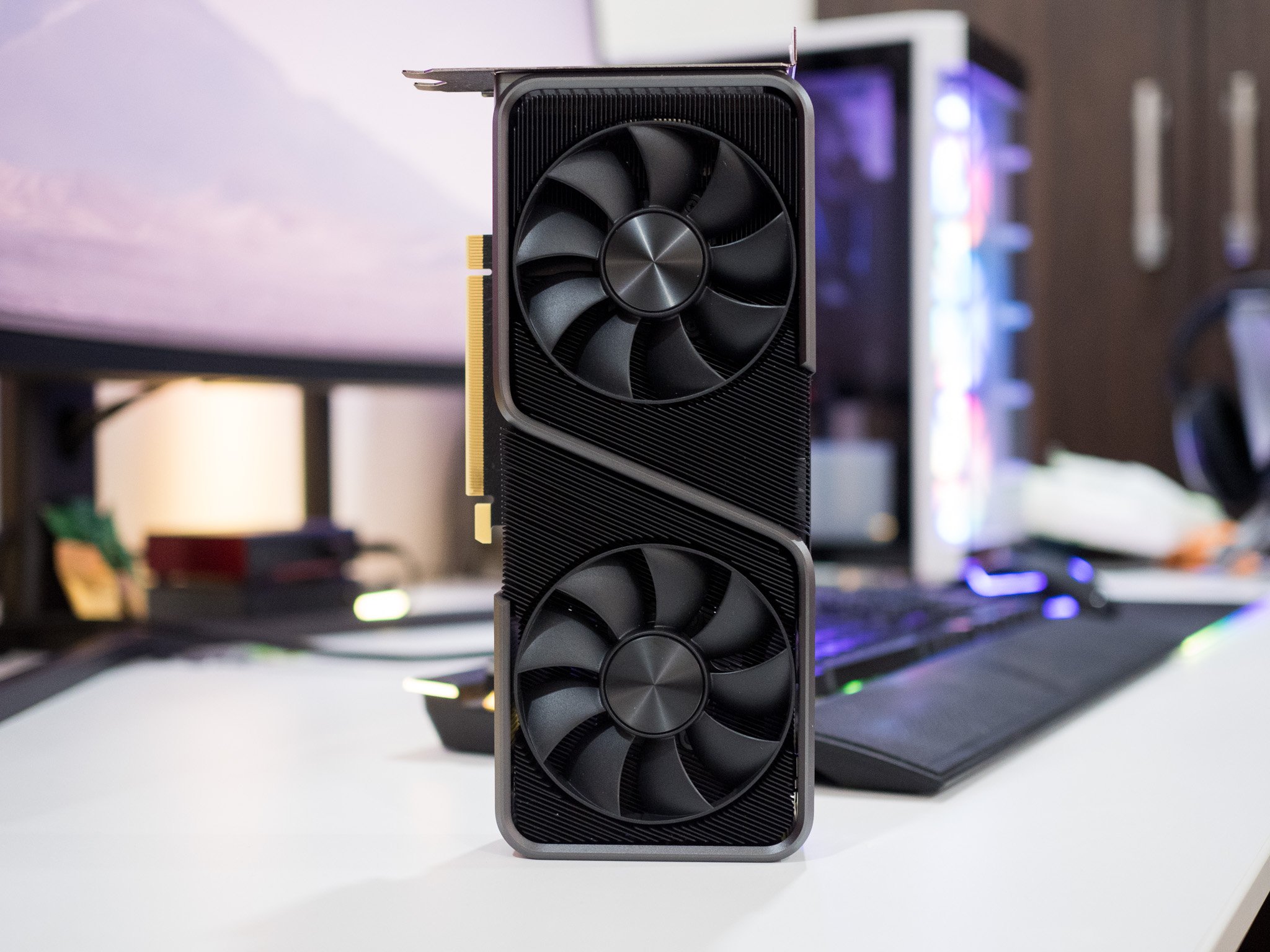
You should buy this if ...
You want the best value
The RTX 3070 is the runaway leader when it comes to value, with the card offering massive gains at both 1440p and 4K from the RTX 2070 and 2080. If you're interested in getting the most amount of performance for your money, this is the card to get.
You want a GPU that can play 4K games
The hardware you're getting with the RTX 3070 makes it ideally suited for next-gen gaming, and the card should hold up for several years without any issues whatsoever. The card does incredibly well at 4K gaming as well, and with DLSS gaining momentum, it should be able to deliver 60fps in upcoming titles.
You're looking to upgrade from the GTX 10 or RTX 20 series
The RTX 3070 delivers a 2x increase in performance from the RTX 2070 at 1440p and 4K resolutions. If you're on an RTX 2070, 2080, or an older GTX 10 series card, the RTX 3070 is the ideal upgrade path.
You should not buy this if ...
You want a card right now
The RTX 30 series is hobbled by severe availability issues, with the RTX 3070 sold out at most retailers. That situation isn't likely to change for another month or so, so if you don't like waiting, you'll have to look elsewhere.
The RTX 3080 and 3090 get all the attention because of the hardware on offer, but the RTX 3070 is the card that stands out in the RTX 30 series. The card delivers exciting performance gains across the board from the RTX 20 series, and in terms of price-to-performance figures, the RTX 3070 is unchallenged.
Overall, the RTX 3070 is the ideal upgrade option if you're using an older GTX 10 series card, or even the RTX 2070 and 2080. The level of performance you're getting here is truly incredible, and the card delivers over 100fps at 1440p and up to 60fps at 4K without breaking a sweat.
The Founders Edition in particular looks stunning, and right now, the only downside with the RTX 3070 is availability. We're constantly updating where you can buy the RTX 3070 and other RTX 30 series cards, but the fact of the matter is that availability will be limited for most of 2020. If you don't mind the added wait, the RTX 3070 Founders Edition is the card to get.

Bottom line: The RTX 3070 is the new value leader, with the card delivering outstanding performance gains from the RTX 2070 and 2080. You're getting the same level of performance as the RTX 2080 Ti at less than half the price, and that makes the RTX 3070 the default option if you're looking to upgrade in 2020.

Harish Jonnalagadda is a Senior Editor overseeing Asia for Android Central, Windows Central's sister site. When not reviewing phones, he's testing PC hardware, including video cards, motherboards, gaming accessories, and keyboards.
